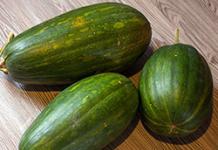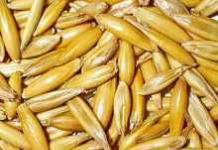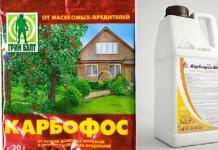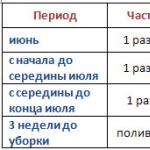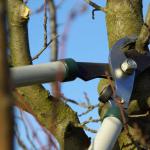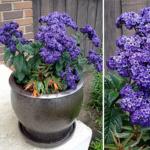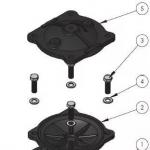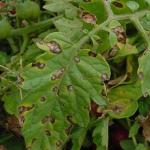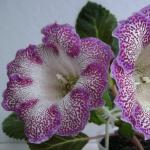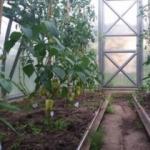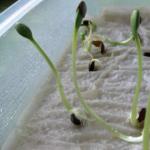Tree hydrangea Incredibol, thanks to its lush, beautiful inflorescence, has surpassed in popularity the most famous varieties, which were considered large in their family. Its inflorescences reach a diameter of 30 centimeters. It begins to bloom in June and continues until September. It is noteworthy that the height of the bush reaches 150 centimeters! A magnificent and unforgettable sight in the garden during flowering. She is considered the queen of the garden, as she has a truly royal appearance and dimensions up and down.
Care and cultivation

The best time to plant it is spring. It is during this period that the earth begins to warm up after winter, and the bush itself begins to bud. The Incredible variety must be planted in a hole up to half a meter deep. In general, its depth will directly depend on the size of the shrub root. If the soil in which the bush is planted is infertile, then the hole should be dug a little deeper. Just 50 grams of mineral fertilizer and a small amount of peat or humus will be enough to fertilize the hole.
Trimming

Being a tree-like plant, it requires pruning. It is necessary to prune it just before frost, or at the beginning of spring, when sap flow has not yet begun (otherwise it dies, bleeding out its juice).
Pruning is necessary from the first year of planting. By cutting branches by 12-15 centimeters, it is necessary to form, so to speak, a small skeleton. In subsequent years, it will be necessary to reduce the length of last year's stems by approximately 2 to 5 centimeters. And those that have died or are already too neglected should be cut off altogether, taking some wood. New shoots of this individual will bloom in the summer. Next year it is worth cutting off all the stems, leaving the hemp about 15 centimeters high.
Hydrangea Incredibol watering
Drought will be disastrous for any pet from this family. It will first begin to wither, and then it may even lose all its leaves. In addition, if there is very little moisture, then the flowers will become smaller and smaller each time, and the plant itself will simply stop developing. Therefore, do not forget the most important rule - it needs to be watered abundantly.. What is even indicated in the translation by its name “vessel with water”.
Hydrangea arborescens Incredibol landscape

In order for the roots to be saturated with oxygen, the soil around them, 5 cm in diameter, needs to be loosened a couple of times a season. This proud plant grows well both alone and as a group plant. In addition, it gets along well with evergreens, conifers and deciduous plants. Incredible can be grown as a houseplant and will definitely decorate any garden plot.
But when choosing a place to plant a garden beauty, it is worth considering that it must grow in this place all the time. She just can't stand being moved or bothered.
Hudrangea Incredible gained popularity as an improved version of the variety called Annabelle hydrangea.
Hayes Starburst is a landscape designer's dream. A real miracle - this is how you can characterize this variety of tree hydrangea, which is definitely worth paying attention to. Southern by origin (its homeland is the southeastern states of the USA) - it has good winter hardiness. The minimum temperatures that this perennial, deciduous shrub can tolerate quite calmly are from -29 to -35 °C. Recommended for cultivation throughout the European part of Russia, as well as in the southern regions of Siberia and Sakhalin.
The variety appeared thanks to the chance and talent of Hayes Jackson from Anniston (Alabama), differs from other types of tree hydrangeas by its spectacular blooming, grouped into a single inflorescence of double, greenish-white, star-shaped flowers. Umbrella-shaped inflorescences consist mainly of sterile flowers with beautiful petal-shaped sepals in several rows, which determines their overall appearance. The greenish color predominates at the beginning of flowering, but by the end of July it turns into creamy white overtones. The flowering period is from the end of June until the first frost. Excellent for cutting.
The flowering period may vary slightly depending on the region and the number of sunny days.
The white lace of asymmetrical inflorescences combines very beautifully with dark green leaves, which in the conditions of the south of Russia, by mid-autumn, can acquire a lemon green color. The leaves are oblong, tapering towards the tip, and have a noticeable serrated edge. Quite large - 10-15 cm. The density of the leaf cover is insufficient to form an impenetrable bush, but this is compensated by the beauty of flowering.
The main drawback of this hydrangea lies in its upright growing stems, which are not strong enough and can bend under the weight of the inflorescences. Because of this, the bush needs a garter or circular supports (pictured below).

The development of the bush is slower than that of other varieties, but this is compensated by the special decorativeness of the plant. The height of a three-year-old Hayes Starburst can reach up to 1.2 m, but on average the plant grows up to a meter. Spreading, what is often called width, is also within 1-1.5 m.
Planting and care
There are no fundamental differences when planting from other varieties of tree hydrangeas. But some recommendations still need to be taken into account when choosing a place, namely:
- The plant is light-loving, but tolerates partial shade. In the shade, the number and size of inflorescences will be significantly lower. You should also avoid places where the hydrangea will be exposed to the midday sun for a long time, this is especially critical for the southern regions.
- Considering that Hayesa's branches are not strong and prone to lodging, it is worth providing a wind-protected place located near buildings, trees or fences. The distance to other trees should be at least 3 meters, otherwise your hydrangea will lack moisture.
- The soil is slightly acidic, well-drained, with constant moisture, but without stagnant water. In general, this particular variety is more or less calm about pH. If for some reason the soil becomes slightly alkaline for a short time, this will not affect the health of the plant in any way.
Hayesa has a shallow root system, so it simply needs occasional watering. As a rule, the number of waterings during non-dry summers can be limited to three or four, but during the hot period their regularity should be increased. Loosening and mulching will also have a beneficial effect on the appearance and health of the beauty. Loosening is carried out to a depth of no more than 5-6 cm around the circumference, exceeding the radius of hydrangea growth by 50-60 cm.

As the first feeding in spring, you can offer urea or superphosphate and potassium sulfide. Under no circumstances use fertilizers or fertilizers that can greatly affect the reduction of soil acidity. These include:
- lime;
- ash;
- fresh manure.
As ready-made mixtures, we can recommend long-acting fertilizers for hydrangeas and rhododendrons, as well as for azaleas. During budding, it is worth using fertilizers based on potassium and phosphorus in order to encourage the plant to bloom abundantly. At the beginning of autumn, you can feed the hydrangea with compost for the last time for the season.
Pruning is carried out either before the onset of winter, or in early spring, before the sap begins to flow. If you didn’t manage to catch the right moment in the spring, you should wait to trim until the first leaves appear. Once every two to three years, it is necessary to carry out sanitary pruning of old, dry branches in order to rejuvenate the bush.
Application
This look will look great when planted in groups or with other perennials in the same flowerbed. In flower gardens it can be used as a background plant. It will also look great when placed along fences and structures. In landscape design - when creating tree and shrub groups in the process of landscaping recreation areas.
Reviews
Most reviews of Hayes Starburst can be found on foreign websites. In our country, the variety is just beginning to fully take root. From the reviews that exist, it becomes clear that:
- this hydrangea is very unpretentious;
- in the first year after spring planting, you may not even see flowering;
- under the scorching sun, the number of flowers is greatly reduced.
Very little has been said about diseases. From this we can conclude that Hayesa copes well with them.
Hayes Starburst in the photo

hydrangea arborescens
Type Tree hydrangea - deciduous shrub. The crown is dense, spherical.Height 1 m - 3 m, width 1 m - 3 m. Growth rate is fast. The annual growth is 30 cm in height and 30 cm in width.
It grows to its final height in about 5-10 years.

Durability 60 years. The flowers are white, 2 cm, collected in corymbose inflorescences up to 15 cm in diameter.
Blooms from mid-July to the second week of October. Most often, flowering lasts 60-75 days. bloom:
growing season:
The foliage is green. Green in autumn. The leaves are ovate or elliptical, serrated along the edges, with a heart-shaped notch at the base, from 6 to 20 cm, the underside is bluish. Decorative effect Tree hydrangea is decorative with its large inflorescences. Light requirements preferably partial shade, grows in the sun with shading during the hottest time of the day. to moisture it grows better in moist soil and does not tolerate long-term drought. the soil should preferably be loose and fertile. Frost resistance is high; in areas exposed to winds, it can freeze slightly in particularly harsh winters, but is quickly restored the following summer. Homeland Eastern regions of North America. Suitable for hedges.
An upright shrub from eastern North America.
Photo by Anna Petrovicheva
A low shrub up to 1 m, sometimes up to 3 m in height, with a rounded crown, slightly pubescent shoots and leaves bare below, which distinguishes it from all other species. The leaves are ovoid or elliptical in shape, their size ranges from 6 to 20 cm. They are serrated along the edges and have a heart-shaped notch at the base. The upper side of the leaf is green, the lower side is bluish. White sterile flowers measure 2 cm in diameter; they are not numerous and, together with small fertile flowers, are collected in corymbose inflorescences up to 15 cm in diameter. The fruit is a capsule - up to 3 mm in size. Blooms profusely from age 4. Flowering is long-lasting, from the first half of July to October. The fruits ripen in October.
In the GBS since 1940, 2 samples (12 copies) were grown from seeds obtained from Turin (Italy) and from root shoots from plants available in the GBS collection. At 29 years old, the height is 1.7 m, crown diameter is 150 cm. It grows from mid-May to October. The growth rate is high. Blooms in July. The fruits ripen in October. Winter hardiness is average. 100% of cuttings take root (without treatment). Recommended for landscaping in Moscow.
It is characterized by rapid growth, demanding soil and moisture. It tolerates the presence of lime in the soil better than other species. The plant is easily propagated by cuttings, the rooting rate of which reaches 100% when the cuttings are pretreated with a 0.005% solution of indolyl butyric acid. However, it is simplerpropagate this species by layering. In the spring, the shoot on the bush is bent down and placed in a dug groove 8-10 cm deep. The cuttings are pinned and sprinkled with 1-1.5 cm of soil. The tip of the shoot is carefully bent upward (preferably at an angle of 45°). The soil is kept loose and moist. During the season, the soil is added 2-3 more times. The following spring, rooted young plants are separated from the mother bush using pruning shears and replanted with a lump of earth.
 Hydrangea arborescens "Incrediball" Hydrangea arborescens "Incrediball"
Photo by Andrey Ganov |
 Hydrangea arborescens "Invincible" Hydrangea arborescens "Invincible"
Photo by Andrey Ganov |
 Hydrangea arborescens "Hayes Starburst"
Hydrangea arborescens "Hayes Starburst"
Photo of Shakhmanova Tatyana
Winter-hardy. Good regrowth after harsh winters allows this species to be widely used in the European part of Russia. It is found in culture from St. Petersburg to the Caucasus. In Ukraine, the North-West and in the central regions it sometimes freezes slightly, but quickly recovers and blooms profusely in summer. In the southern steppe regions it may suffer from a lack of moisture. In the middle zone and to the north, preventive shelter is desirable. Due to the fact that an adult bush is quite tall - 1.25 m in height, first a stake is driven in nearby and a hydrangea is tied to it, and then large branches of spruce branches are strengthened around it . Under such shelter the shrub winters well.
An exceptionally spectacular plant in single and group plantings. Combines with roses, clematis, lilies. Good for creating edges in tree and shrub compositions. Tree hydrangea and its forms are very impressive in unformed hedges. In culture since 1746.
There are many varieties known in culture that are still little used in garden plots.
"Annabel"- a shrub 1-1.5 m high with a wide-spreading crown up to 3 m in diameter. Bright green leaves 8-15 cm long remain green in autumn. White flowers are sterile, about 2 cm in diameter, collected in large inflorescences up to 25 cm in diameter - Flowering time: from June to September. Characterized by rapid growth. Annual growth is 20 cm.
"Grandiflora"- shrub 1.5 - 2 m high and crown diameter up to 3 m. Light green leaves up to 16 cm long. The flowers are creamy-white, up to 2 cm in diameter, collected in corymbose inflorescences up to 20 cm in diameter. Flowering is abundant and long, from June to September.
"Sterilis"- distinguished by exceptionally abundant and long-lasting flowering. The inflorescences are dense, hemispherical, and bend the branches with their weight. They consist of sterile flowers that turn from whitish-green to pure white and do not turn pink. Blooms from July to October. In GBS since 1967, 3 samples (13 copies) were grown from cuttings obtained from St. Petersburg, plants from the GBS collection and seedlings of unknown origin. At 29 years old, the height is 1.9 m, crown diameter is 230 cm. It grows from late May to early October. The growth rate is high. Blooms in August. Winter hardiness is average. 100% of cuttings take root (without treatment). Recommended for landscaping in Moscow.
Tree hydrangea (hydrangea arborescens) is increasingly found in our gardens and front gardens. This plant is also called garden hydrangea, wild hydrangea or smooth hydrangea. Hydrangea is native to eastern North America, where it grows in moist forests and on rocky slopes, near streams and in ravines. The plant was cultivated in 1736 and since then has been grown almost everywhere.
Hydrangea is a bush that grows up to 2 meters in height. The crown has an interesting round shape with slightly drooping shoots. The leaves are in the shape of an irregular ellipse up to 20 cm in diameter. Small white or blue flowers are collected in lush spherical inflorescences - scutes, which attract gardeners and summer residents with their size - they can be up to 15 cm in diameter. Hydangea arborescens blooms for quite a long time - from the beginning of July until October. In mid-autumn, the fruit boxes ripen. The plant is resistant to winter cold - damaged branches are quite easily restored after winter and continue to grow.
Hydrangea tree loves water very much. At one time in scientific literature it was called Gidangea, which means “vessel of water.” However, the name did not catch on, and the plant is still called in honor of the French princess with that name.
Hydrangea varieties
The varieties hydrangea arborescens, which have blue inflorescences, are very popular among gardeners. Most often these are large-leaved varieties of plants with round inflorescences, which are characterized by long and rich flowering. At first, such varieties were only for growing in pots; they were not suitable for growing in open ground, as they froze. However, after a while, cold-resistant specimens were also bred. Here we give a brief description of some varieties of tree hydrangea with blue flowers.

Beautiful bushes of tree hydrangea.
- The variety "Minnie Penny" is a remontant variety. Inflorescences are formed on shoots of the current growth period. It is distinguished by its lush greenery and soft blue flowers.
- Variety "Romance". Plants of this variety are small and compact. Flowers can be of different colors. Specimens with purple, violet, and also bright blue flowers are known.
- Variety "Freedom" is a two-color variety of tree hydrangea. At the beginning of flowering, the flowers are pink in color, then in the middle the flowers become blue, and closer to the edge of the inflorescence - white.
Growing and care
- Landing place.
For planting and comfortable growth of tree hydrangea, it is recommended to choose a place in partial shade. It is important that the sun illuminates the plant only in the morning and evening hours. Descriptions of this shrub indicate that the plant loves moisture and therefore is not planted near trees. The soil should be light and enriched with humus; soil with peat and sand is also suitable, but additions of lime and ash are not recommended.
When caring for hydrangea, special attention is paid to soil moisture. It is recommended to water the bush at least once a week, and to retain moisture, it is recommended to sprinkle the ground around the root of the bush with peat or sawdust. When watering, plant care involves loosening the soil and weeding.
An important place in caring for tree hydrangea is occupied by plant transplantation. If you properly care for the plant, you need to change the planting location every year in early spring. But you need to prepare the bush for replanting in the fall, after digging a groove around the root system. It is filled with humus and watered abundantly. This preparation helps the bush to safely undergo transplantation.
- Plant nutrition.
Tree hydrangea loves feeding. This is another important point in proper care of any type of hydrangea. To ensure good growth and abundant flowering, fertilizers are added to the soil. In early spring, before mulching the plant, it is advisable to fertilize it with the factory-made preparation “Kemira-flower”. During this period, organic and mineral fertilizers enriched with magnesium and iron are necessary. The plant is fed the second time during the budding period - at this time a mixture of 50 g of phosphorus and 25-30 g of potassium is added. At the end of May or at the beginning of June, you can water the plant with a diluted solution of bird droppings - with it, the bush receives the microelements and organic compounds necessary for growth and development; during this period, complex mineral fertilizers containing superphosphate, urea and potassium nitrate are also used. You can also use dairy products (cheese milk, yogurt or kefir) as a top dressing. A weak solution of potassium permanganate also helps strengthen the shoots. Hydrangea is fed every two weeks throughout the summer. The plant stops fertilizing at the end of July or beginning of August - from this time the shoots become coarser, and in this state they can survive the winter cold.

Tree hydrangea requires proper care.
We should not forget that hydrangea loves moisture very much. Water the bush every week, not forgetting to add a small amount of potassium permanganate to the water from time to time. To retain moisture, the near-trunk area of the soil is mulched with peat or sawdust in a layer of about 6 cm.
- Hydrangea propagation.
Hydrangea can be propagated in several ways: cuttings, dividing an old bush or layering.
The division of the old bush is carried out in early spring, before intensive growth and movement of juices begins. To do this, dig up the bush completely, separate the roots along with the shoots with a shovel and plant them in a prepared place. It is permissible not to dig up the bush completely, but only dig out a part, capturing the roots and above-ground shoots.
When propagated by cuttings, they are prepared during the flowering period of the bush. To do this, cut off the upper parts of this year's shoots that have not yet become woody. Then they are treated with “Kornevin” - a factory fertilizer and placed in a box with fertile substrate and sand on top. Cuttings usually take root within a month. If you properly care for the cuttings, then by August they can be planted in open ground.
Reproduction by layering is considered the easiest. To do this, in the spring, the selected shoots are bent and placed in a prepared groove to a depth of 10 cm. The shoot is fixed and sprinkled with a small layer of soil (1 - 1.5 cm), bending the top of the shoot upward. The soil around the cuttings is regularly loosened and watered, and more soil is added if necessary. The cuttings are separated from a large bush the next spring and, together with a lump of earth, are transplanted to a new place. A bush planted in this way begins to bloom after 4-5 years.
- Shrub trimming.
An important place in caring for tree hydrangea and its other species is occupied by pruning the plant. This operation is carried out in early spring, removing the frozen upper parts of the shoots from young bushes. Older bushes that have reached 4 years of age are pruned regularly during this period, cutting off 20 cm from the tops of the shoots. It has been noticed that this procedure helps to increase inflorescences.
Hydrangea cannot be classified as a whimsical plant. By following simple recommendations for growing and caring for this plant, it is quite easy to grow this shrub and get an amazingly beautiful living decoration for your summer cottage or city flower bed.
